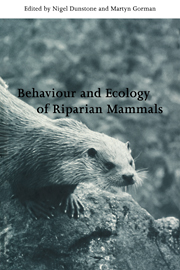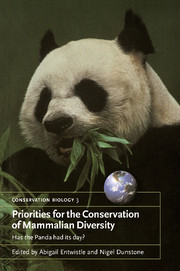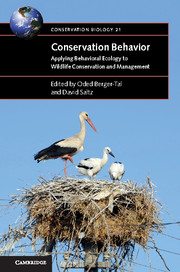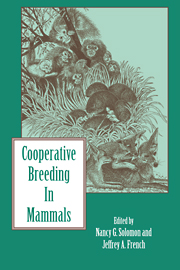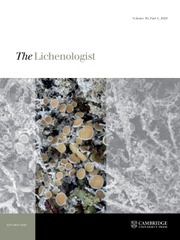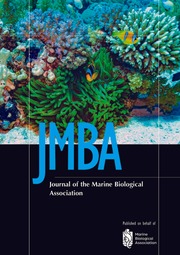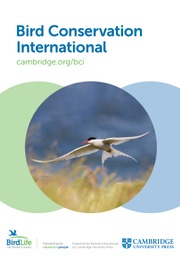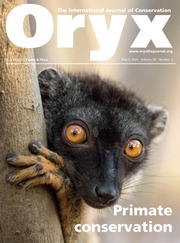Behaviour and Ecology of Riparian Mammals
Many mammals, such as otters, live in close association with rivers and streams, feeding in them, or using them as a place of safety or means of escape from predators. The distinct adaptations that riparian mammals have evolved in order to live in these environments also handicap them for living elsewhere. These animals are therefore threatened by alterations to their environment. In recent years, our rivers have become highly polluted, and have been subject to bankside modifications for agriculture and forestry, enhanced or decreased water flow, and recreation. As a result, they have become less and less suitable for these highly specialized animals. This book looks at the habitat utilization, adaptation, feeding ecology, and conservation status of a range of riparian mammals. It gives insights into the problems facing these fascinating animals, and how they might be overcome.
- Multidisciplinary and comparative approach to biology of freshwater amphibious mammals
- Excellent cast list of contributors with worldwide reputations
- Covers otters, mink, watershrews, hippopotami, etc.
Product details
July 2007Paperback
9780521038072
404 pages
227 × 151 × 23 mm
0.608kg
91 b/w illus. 68 tables
Available
Table of Contents
- List of contributors
- Preface
- 1. Adaptations to the semi-aquatic habit and habitat N. Dunstone
- 2. Physiological challenges in semi-aquatic mammals: swimming against the energetic tide T. M. Williams
- 3. Diving capacity and foraging behaviour of the water shrew (Neomys fodiens) P. Vogel, C. Bodmer, M. Spreng and J. Aeschimann
- 4. Habitat use by water shrews, the smallest of amphibious mammals S. Churchfield
- 5. The importance of the riparian environment as a habitat for British bats P. A. Racey
- 6. A preliminary study of the behaviour of the European mink Mustela lutreola in Spain, by means of radiotracking S. Palazón and J. Ruiz-Olmo
- 7. The demography of European otters Lutra lutra M. L. Gorman, H. Kruuk, C. Jones, G. McLaren and J. W. H. Conroy
- 8. Habitat use and conservation of otters (Lutra lutra) in Britain: a review H. Kruuk, D. N. Carss, J. W. H. Conroy and M. J. Gaywood
- 9. The relationship between riverbank habitat and prey availability and the distribution of otter (Lutra lutra) signs: an analysis using a geographical information system T. J. Thom, C. J. Thomas, N. Dunstone and P. R. Evans
- 10. Influence of altitude on the distribution, abundance and ecology of the otter (Lutra lutra) J. Ruiz-Olmo
- 11. Diets of semi-aquatic carnivores in northern Belarus, with implications for population changes V. Sidorovich, H. Kruuk, D. W. Macdonald and T. Maran
- 12. Otter (Lutra lutra) prey selection in relation to fish abundance and community structure in two different freshwater habitats D. N. Carss, K. C. Nelson, P. J. Bacon and H. Kruuk
- 13. Diet, foraging behaviour and coexistence of African otters and the water mongoose D. T. Rowe-Rowe and M. J. Somers
- 14. Feeding ecology of the smooth-coated otter Lutra perspicillata in the National Chambal Sanctuary, India S. A. Hussain and B. C. Choudhury
- 15. Population trends of hippopotami in the rivers of the Kruger National Park, South Africa P. C. Viljoen and H. C. Biggs
- 16. Reproductive strategies of female capybaras: dry-season gestation E. A. Herrera
- 17. The continuing decline of the European mink Mustela lutreola: evidence for the intraguild aggression hypothesis T. Maran, D. W. Macdonald, H. Kruuk, V. Sidorovich and V. V. Rozhnov
- 18. Otters and pollution in Spain J. Ruiz-Olmo, J. M. López-Martín and M. Delibes
- 19. The rapid impact of resident American mink on water voles: case studies in lowland England C. Strachan, D. J. Jeffries, G. R. Barreto, D. W. Macdonald and R. Strachan
- 20. Status, habitat use and conservation of giant otter in Peru C. Schenck and E. Staib
- Index.

